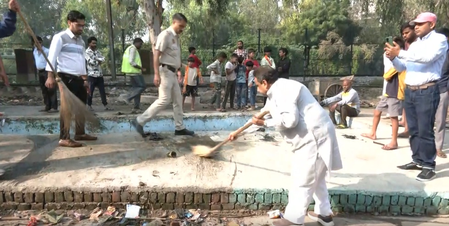Copyright newskarnataka

According to video footage that went viral on social media, Reshma had gone into labour in the village. Her father-in-law, Krishna Kumar Kewat, placed her on a bullock-cart and navigated through the rough stretch until they came across an ambulance parked at Bhaturi, outside the village. (LatestLY) The footage shows the cart trundling over potholes and muddy patches, with Reshma lying on straw, while the cart driver coordinates via mobile phone and mentions the emergency assistance helpline number 108. (LatestLY) Local residents say that poor road connectivity and lack of ambulance access deep into rural hamlets contributed to the scenario, forcing the family to improvise in the face of the emergency. Infrastructure gap affecting maternal health Health experts say that such incidents highlight the critical gap in last-mile connectivity for emergency medical services in rural India. When an ambulance cannot reach the village, pregnant women, especially those in pain, are at risk of complications due to delayed access to hospital care. In this case, the muddy terrain and unpaved approach road appear to have prevented the ambulance from reaching the doorstep, prompting Reshma’s family to resort to the bullock-cart. Officials from the Hamirpur district administration have not yet responded publicly to the incident. Meanwhile, health-NGOs and rights groups are calling on the authorities to prioritise road-upgradation around village stretches, especially in areas where women in labour require time-sensitive transfers. Calls for accountability and remedial action Local advocates argue that repeated instances of emergency vehicles not reaching remote areas require accountability from both the public health department and public works officials. They are pressing for: A mapping exercise of all villages where ambulances cannot access due to poor roads Deployment of intermediate transport options, e.g., ambulance-accessible pickups or stretcher-trolleys Upgradation of approach roads and drainage, especially in monsoon seasons Monitoring of ambulance access times and regular audits The fact that a pregnant woman had to endure a rough bullock-cart journey suggests a failure in the last-mile implementation of key health interventions, including the Janani Suraksha Yojana (JSY) and 108 ambulance services, which target safe delivery in India’s rural areas. The incident in Hamirpur underscores the urgent need for robust infrastructure and effective emergency transport in rural India. When basic services like ambulance access are hampered by connectivity issues, lives — particularly of women and newborns — are put at risk. Steps to ensure that medical aid reaches the doorstep, not just the roadside, are indispensable in strengthening rural healthcare outcomes.



